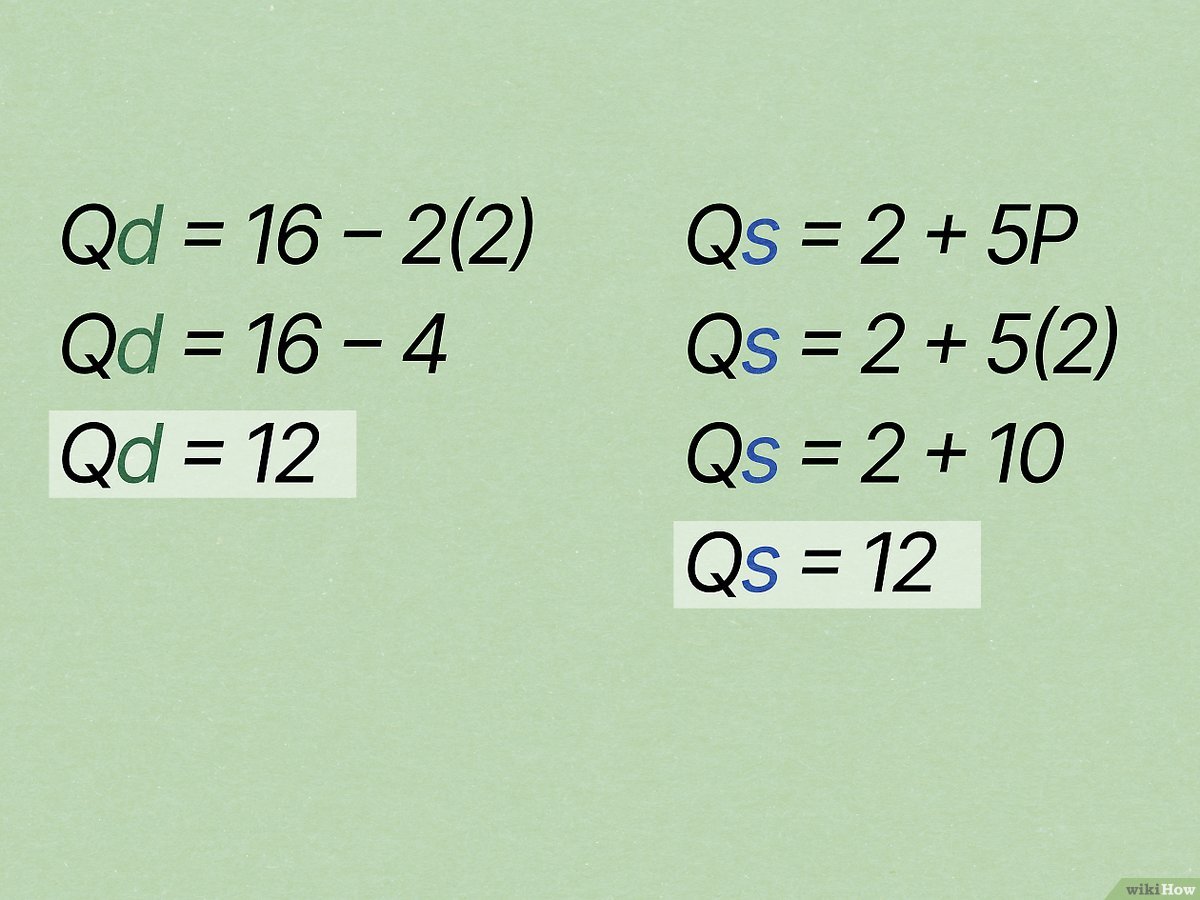How to Solve Equilibrium Problems in Economics: A Step-by-Step Guide
Sure, here’s a 1000-word article on “How to Solve Equilibrium Problems in Economics”. If you’re studying economics, you’ll likely come across the concept of equilibrium. In simple terms, equilibrium is a state where the supply of a good or service matches the demand for it. By understanding this balance, you can analyze and solve a wide range of economic problems.
Understanding Equilibrium
Equilibrium in economics is a crucial concept that helps in analyzing and solving various economic problems. It is the state where the quantity demanded by consumers is equal to the quantity supplied by producers, resulting in a stable market price. This balance is fundamental to the functioning of markets, and understanding how to solve equilibrium problems is essential for any student of economics.

Credit: www.amazon.com

Credit: www.wikihow.com
Using Supply and Demand
The most common approach to solving equilibrium problems in economics involves the concepts of supply and demand. When the demand for a product or service is equal to the supply, the market is in equilibrium. This balance is represented graphically by the intersection of the supply and demand curves. By analyzing these curves, you can determine the equilibrium price and quantity for a particular market.
Steps to Solve Equilibrium Problems
Here are the steps to solve equilibrium problems in economics:
- Identify the Supply and Demand Curves: Begin by identifying the supply and demand curves for the product or service in question. These curves represent the quantity supplied and demanded at different price levels.
- Find the Intersection Point: The equilibrium point is where the supply and demand curves intersect. This point represents the equilibrium price and quantity for the market.
- Check for Disequilibrium: If the market price is not at the intersection point, there is a disequilibrium. In this case, either the quantity supplied exceeds the quantity demanded or vice versa.
- Adjustment Process: In real-world markets, prices and quantities are constantly adjusting to reach equilibrium. If there is disequilibrium, this adjustment process is represented by changes in prices and quantities until the market reaches equilibrium.
Applying Equilibrium Theory in Economics
Equilibrium theory is a powerful tool in economics that can be applied to model and analyze a wide range of economic situations. By understanding and applying this theory, you can gain insights into how markets function and how changes in supply and demand can impact prices and quantities.
In economics and finance, equilibrium theory is used to model and analyze situations where agents maximize utility or face random preferences. This allows economists and analysts to understand the behavior of consumers, producers, and market participants, and to predict the outcomes of various economic scenarios.
Study Equilibrium Theory in Economics at the Best English Medium School in Dhaka for A-levels
Studying Equilibrium Theory in Economics at the Best English Medium School in Dhaka for A-levels offers students a comprehensive understanding of economic principles crucial for navigating today’s complex global economy. Equilibrium Theory, a cornerstone of economic analysis, explores how supply and demand interact to determine prices and quantities in markets. By delving into this theory, students grasp fundamental concepts such as market equilibrium, where the quantity demanded equals the quantity supplied, leading to stable prices.
The Best English Medium School in Dhaka provides an exceptional educational environment for A-level students, offering rigorous academic programs taught by experienced faculty members dedicated to excellence. With a focus on English as the medium of instruction, students not only master economic theories but also enhance their language skills, preparing them for success in higher education and beyond.
Studying Equilibrium Theory at this esteemed institution equips students with analytical tools to evaluate real-world economic phenomena, from understanding price fluctuations to analyzing government interventions. By fostering critical thinking and problem-solving abilities, students develop the skills necessary to thrive in diverse fields such as business, finance, and policymaking. In essence, studying Equilibrium Theory at the Best English Medium School in Dhaka for A-levels opens doors to a world of opportunities, empowering students to become informed global citizens and future leaders in economics and beyond.
Read More
Conclusion
Solving equilibrium problems in economics is essential for understanding how markets function and how supply and demand interact to determine prices and quantities. By applying the concepts of equilibrium and understanding the forces that drive market dynamics, economists gain valuable insights into the workings of the economy.







